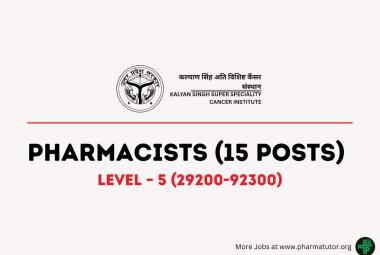About Authors:
Dr.Vivek Srivastav (Ph.D)
Maxcure drugs & Pharmaceuticals Ltd.
B-7, Laxmi Tower-II, Block-C, L.S.C.
Saraswati Vihar, Delhi-110034
Gout is a kind of arthritis that occurs when uric acid builds up in the joints. Acute gout is a painful condition that typically affects one joint. Chronic gout is repeated episodes of pain and inflammation, which may involve more than one joint. Gout is a medical condition usually characterized by recurrent attacks of acute inflammatory arthritis—a red, tender, hot, swollen joint. The metatarsal-phalangeal joint at the base of the big toe is affected most often (condition also known as podagra1), accounting for half of cases. Other joints, such as the heels, knees, wrists and fingers, may also be affected. Joint pain usually begins over 2–4 hours and during the night. The reason for onset at night is due to the lower body temperature then. Other symptoms that may occur along with the joint pain include fatigue and a high fever
[adsense:336x280:8701650588]
Reference Id: PHARMATUTOR-ART-1169
Hyperuricemia (having higher-than-normal level of uric acid in your body) is causal factor of Gout and defined as a plasma urate level greater than 420 μmol/L (7.0 mg/dL) in males and 360 μmol/L (6.0 mg/dL) in females3. This can occur for a number of reasons, including diet, genetic predisposition, or underexcretion of urate, the salts of uric acid2. Presence of uric acid crystals in joints causes inflammation of joints. Uric acid is formed during metabolism of food and building up of body tissues. When the level of uric acid increases in blood than normal levels, the uric acid forms microscopic crystals in joints. These crystals lead to inflammation of joints. Lifestyle, Genetics, Medical conditions and certain medication are other notable reasons to develop gout.About 10% of people with hyperuricemia develop gout at some point in their lifetimes. The risk, however, varies depending on the degree of hyperuricemia. When levels are between 415 and 530 μmol/L (7 and 8.9 mg/dL), the risk is 0.5% per year, while in those with a level greater than 535 μmol/L (9 mg/dL), the risk is 4.5% per year1.
Treatment - Need to think about Natural healing
There are certain drugs and other remedial aspect of treating gout, which is conventional like NSAIDs (Nonsteroidal anti-inflammatory drugs), Colchicines (as an alternative to those unable to tolerate NSAIDs) and steroids
In parallel to conventional drugs, use of certain herbs and culinary will do wonder if consumed judiciously. The traditional knowledge of Ayurveda and its validation with scientific methods has certainly given a prolific remedy in number of diseases and disorders, which are obstinate and conventional drugs are not promising. Gout is one of the disease can be cured naturally by herbs and specific phytochemicals. The herbs like Zingiber officinale, Curcuma longa, Boswellia serrata, Celery seed etc. are known for their anti-inflammatory properties and reported to balance uric acid in disturbed uric acid metabolism.
Zingiber officinale(Ginger): Ginger is a culinary herb and known for its valuable medicinal properties. The principal chemical constituents present in ginger are Zingerone, shogaols, gingerols and volatile oils. Ginger is used as an anti-inflammatory agent for gout. Gingerol present in ginger and exerts a strong anti-inflammatory effect, which is considered as effective against acute gouty arthritis.
Curcuma longa(Turmeric): Turmeric is one of the nature’s most powerful healers and belongs to the Ginger family i.e. Zingiberaceae.Curcumin present in turmeric is responsible for its yellow colour and reported to use in inflammatory conditions. Curcumin has been shown to be as effective as cortisone or phenylbutazone in certain models of inflammation. Curcumin also exhibits many beneficial effects on liver functions.Oneof Curcumin's most important abilities is to inhibit a potent inducer of chronic inflammation. NF-kB (nuclear factor-kappa B) is a protein responsible for activating inflammatory responses in the body. Curcumin reduces the activity of xanthine oxidase [XO], the enzyme involved in the production of uric acid. This is also the job of a well known prescription drug known as Allopurinol. Curcumin can produce the same results, but in a much safer and natural method without the negative side effects.
Boswellia serrata(Indian frankincense): Boswellia is most prominent herb, which is widely accepted as an anti-inflammatory. Extracts of Boswellia serrata have been clinically studied for osteoarthritis and joint function, particularly for osteoarthritis of the knee. Positive effects of Boswellia in some chronic inflammatory diseases including rheumatoid arthritis, bronchial asthma and osteoarthritis.Gum resin of Boswellia serrata has its very important role against inflammation and its mediators. It increases the phagocytosis of macrophages and affects the cellular defense system by interaction with production/release of cytokines. The anti-inflammatory activity of Boswellia serrata is well established on the basis of its mode of action of Boswellic acids (β-boswellic acid, acetyl-β-boswellic acid, keto-β-boswellic acid and acetyl-11-keto-β-boswellic acid), which is principal chemical constituent of plant.
Apium graveolens(Celary seed): Celery is a diuretic, so it promotes the excretion of urine. Thus it helps removes uric acid from the body.Celery seed is most often taken to aid in the maintenance of healthy joints. Celery seeds have been found to have anti-inflammatory properties that reduce swelling and pain around the joints.
Harpagophytum procumbens(Devil’s claw): The chemical, principle extracted from the Devil's Claw root, (Harpagoside procumbens) is a Glycoside (sugar derivative) called Harpagoside. This active ingredient contributes the natural anti-inflammatory properties used as a Gout remedy and other painful disorders of the musculoskeletal system.
Bromelain: Bromelain is a proteolytic enzyme and present in all parts of the pineapple plant (Ananas sp.) but is the most common commercial source. Bromelain Relieve symptoms associated with gout. Bromelain may relieve the joint and tissue swelling and severe pain related to an attack of gout. It has also been proposed that, when taking on a regular basis, bromelain may also prevent recurrent gout attacks.
Vitamin C: A high daily intake of vitamin C may reduce the risk of gout in men, according to a study conducted by researchers from the Boston University School of Medicine and published in theArchives of Internal Medicine. In a 20-year study on 47,000 male health care professionals, researchers found that men who took a daily vitamin C supplement of 1,000 to 1,499 milligrams had a 34 percent lower risk of gout than men who did not take a vitamin supplement. Men who took a supplement of 1,500 milligrams or more per day had a 45 percent lower risk of the disease5 than men who did not take anything.
[adsense:468x15:2204050025]
Gout was historically known as the “disease of kings” or rich man’s disease but scenario have been changed. Gout has became a life style disorder and affecting number of peoples who are ignoring the symptoms and don’t modify their dietary habits. The first line of treatment at early stage should not be a drug, while one should go for an holistic approach, which includes home remedy, herbal therapy, exercise, acupressure and most important amongst them is dietary changes because dietary causes account for about 12% of gout2 and comprise a strong association with the consumption of alcohol, fructose-sweetened drinks, meat, and seafood4 and other high protein content of different foodstuff categories. Low-calorie diet in obese men decreased uric acid levels by 100 µmol/L (1.7 mg/dL)6. Coffee, but not tea, consumption is associated with a lower risk of gout7
References:
1. Eggebeen AT (September 2007). "Gout: an update". Am Fam Physician 76 (6): 801–8.PMID 17910294.
2. Chen LX, Schumacher HR (October 2008). "Gout: an evidence-based review". J Clin Rheumatol 14 (5 Suppl): S55–62..PMID 18830092.
3. Sachs L, Batra KL, Zimmermann B (November 2009). "Medical implications of hyperuricemia". Med Health R I 92(11): 353–55. PMID 19999892.
4. Terkeltaub R (January 2010). "Update on gout: new therapeutic strategies and options". Nat Rev Rheumatol 6 (1): 30–8 PMID 20046204.
5. Choi HK, Gao X, Curhan G (March 2009). "Vitamin C intake and the risk of gout in men: a prospective study". Arch. Intern. Med.169 (5): 502–7 PMC 2767211. PMID 19273781.
6. Richette P, Bardin T (January 2010). "Gout". Lancet 375 (9711): 318–28.. PMID 19692116.
7. Choi HK, Curhan G (June 2007). "Coffee, tea, and caffeine consumption and serum uric acid level: the third national health and nutrition examination survey". Arthritis Rheum. 57 (5): 816–21. PMID 17530681.
NOW YOU CAN ALSO PUBLISH YOUR ARTICLE ONLINE.
SUBMIT YOUR ARTICLE/PROJECT AT articles@pharmatutor.org
Subscribe to Pharmatutor Alerts by Email
FIND OUT MORE ARTICLES AT OUR DATABASE









